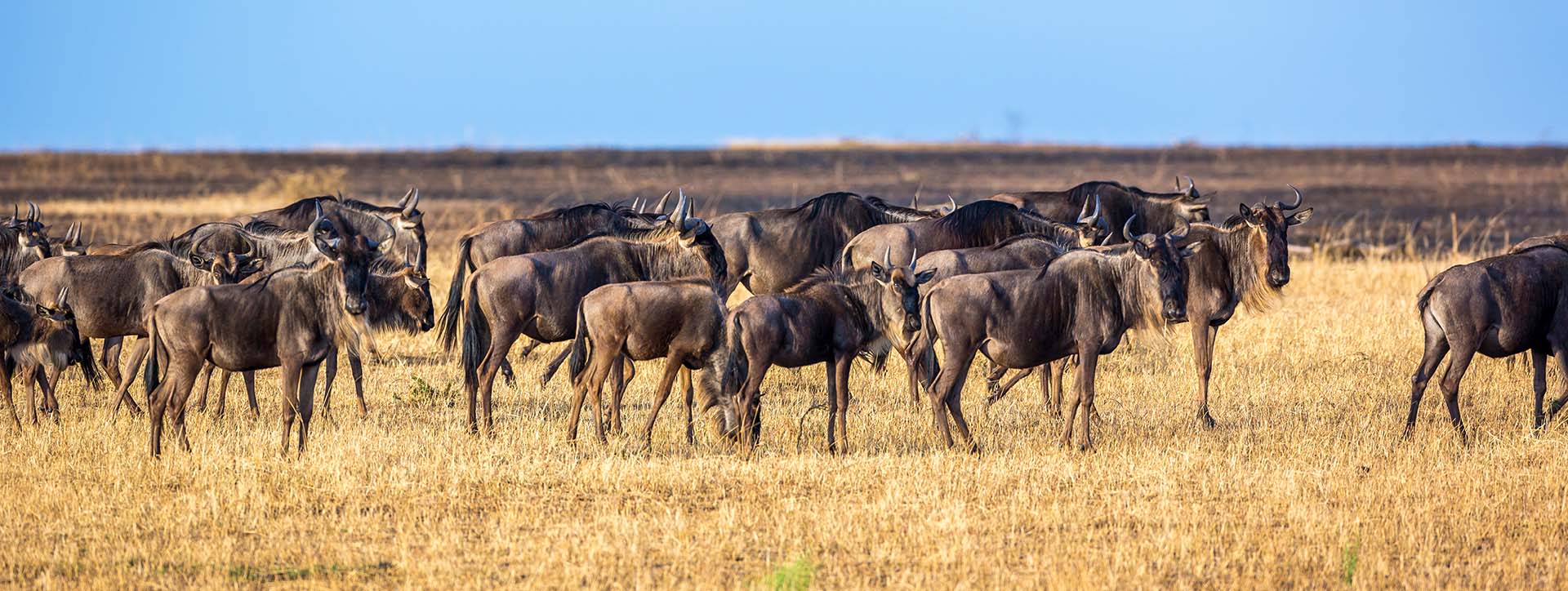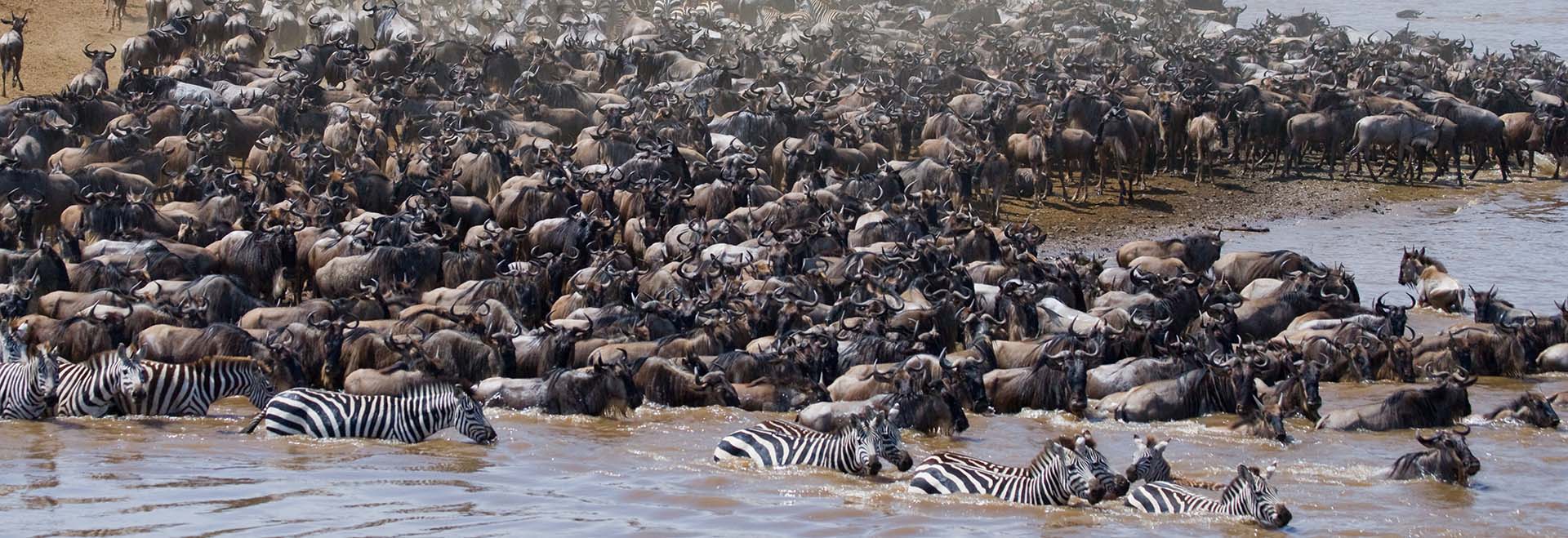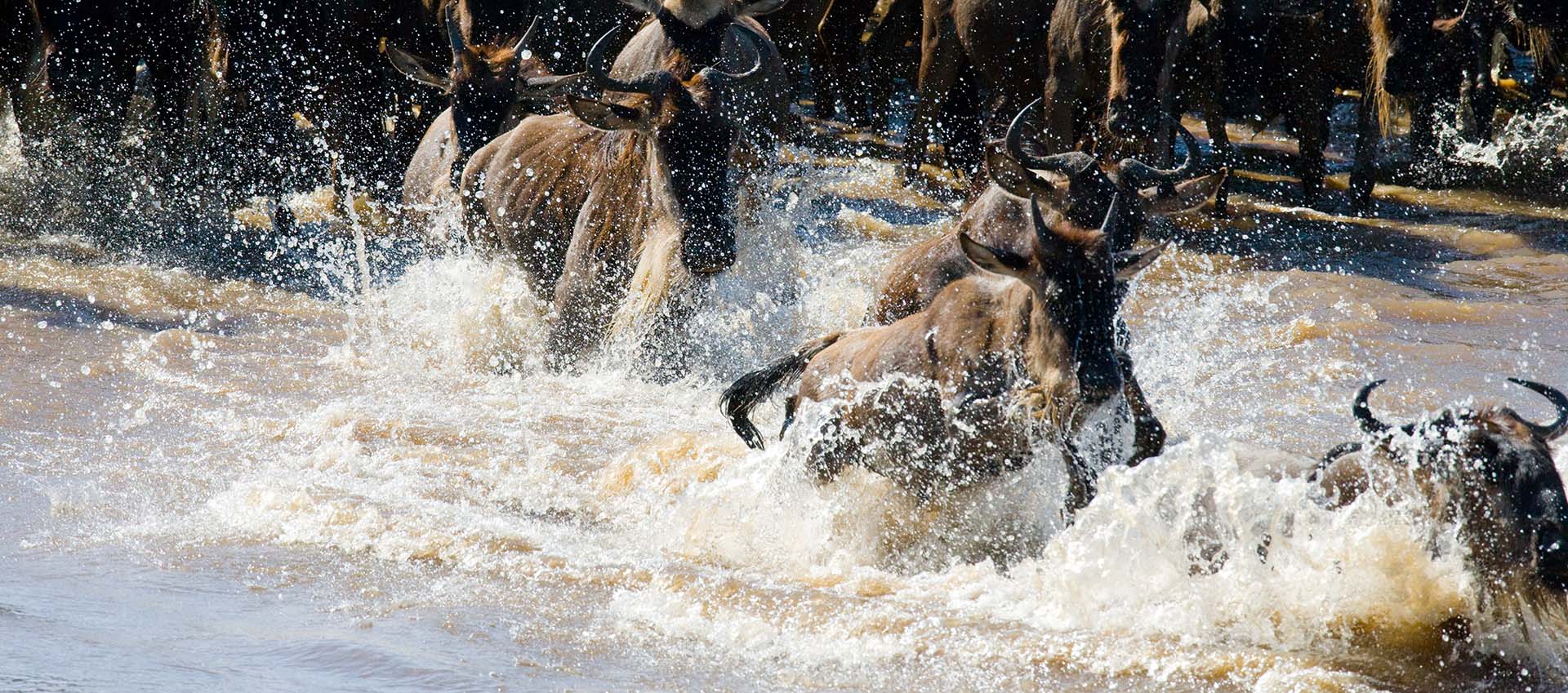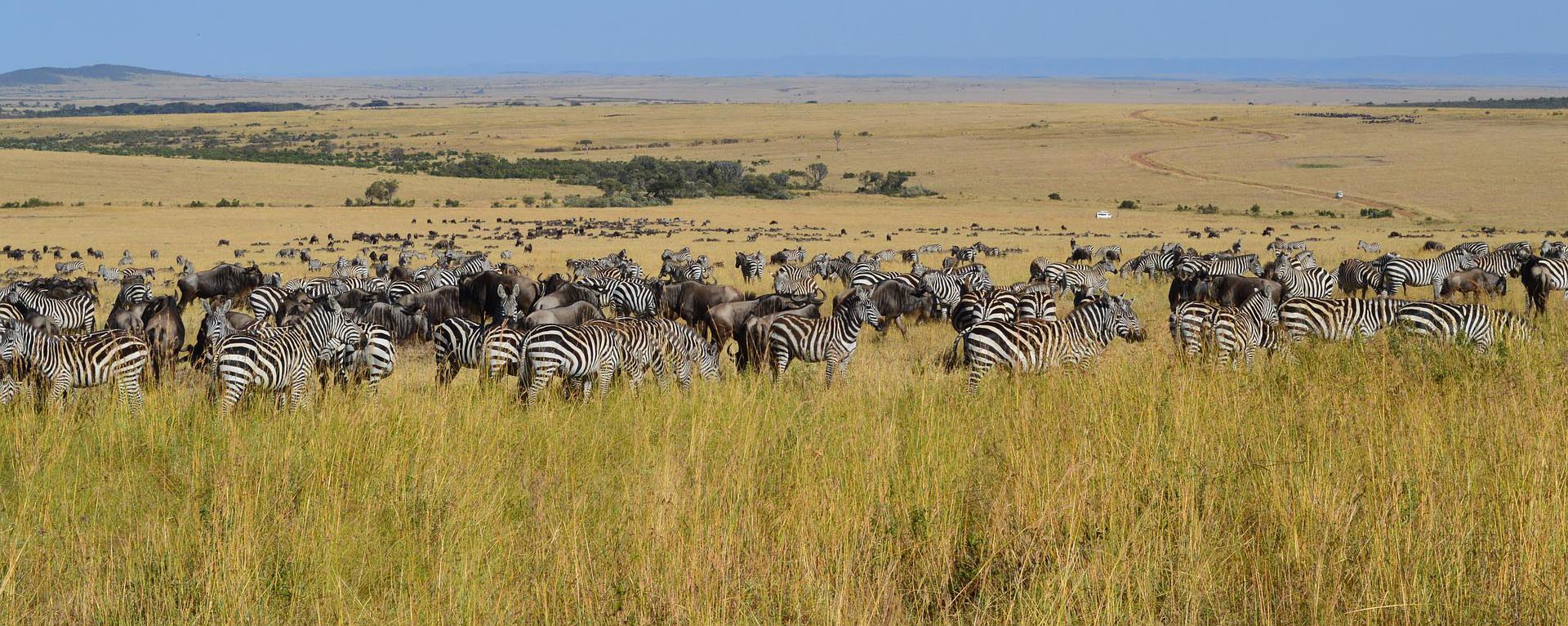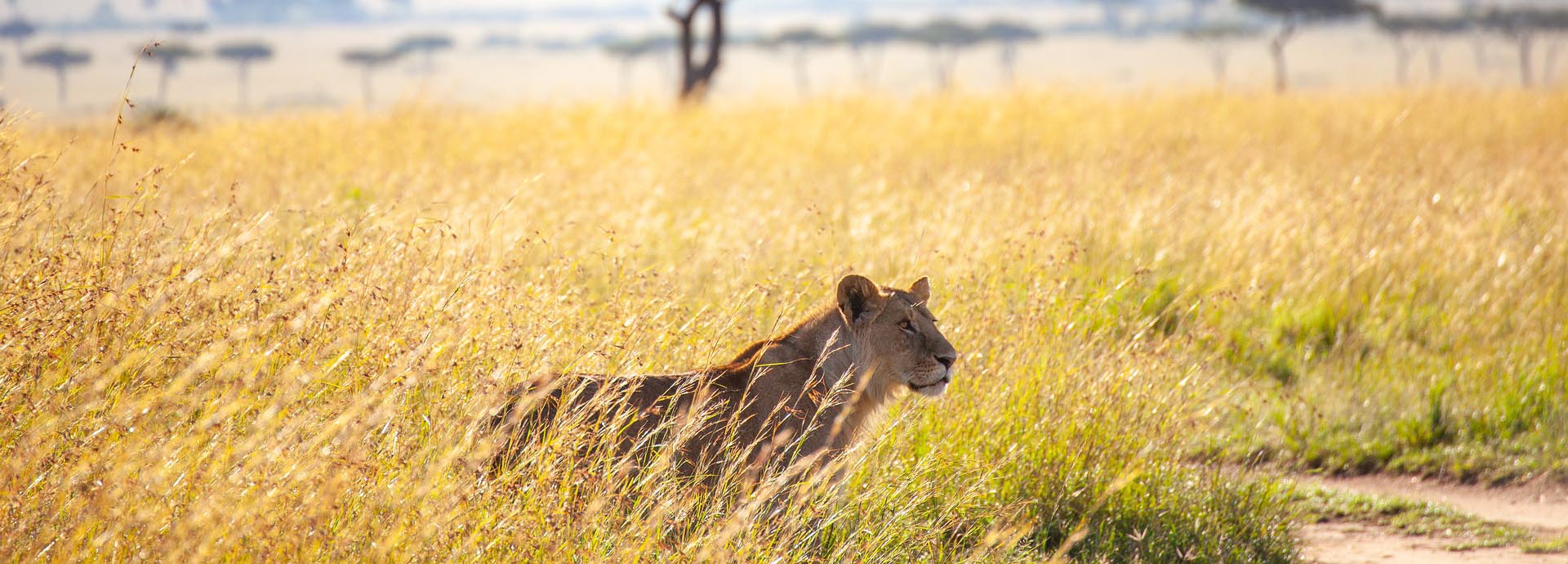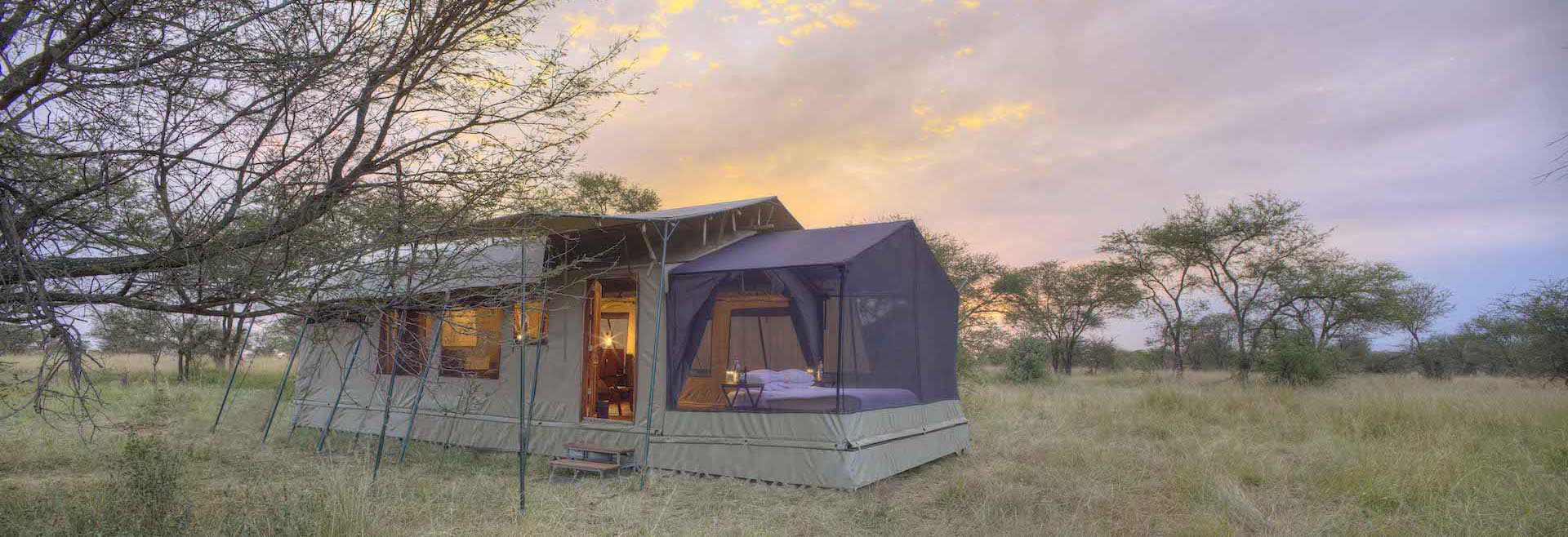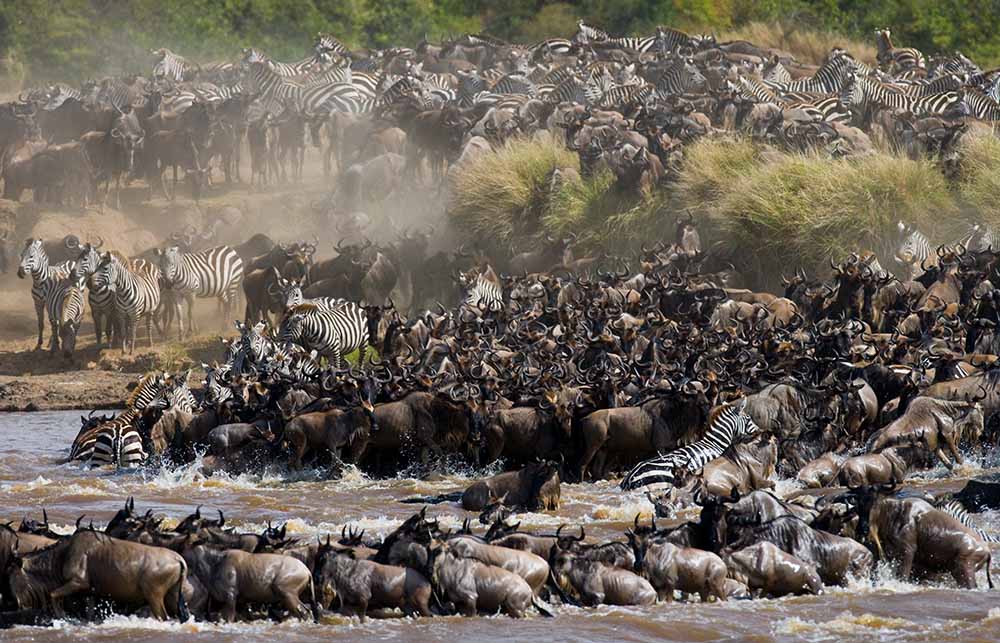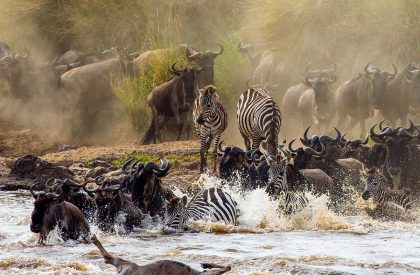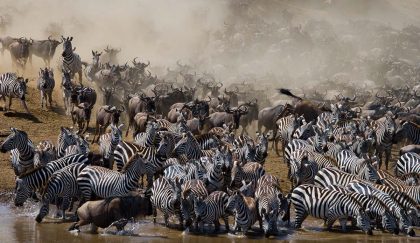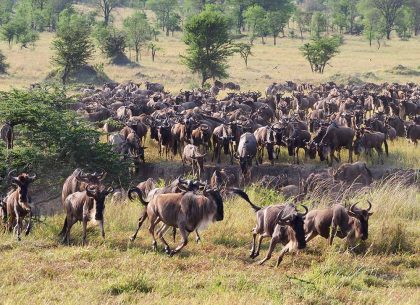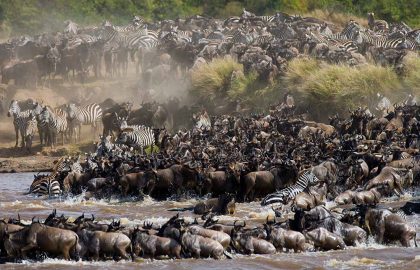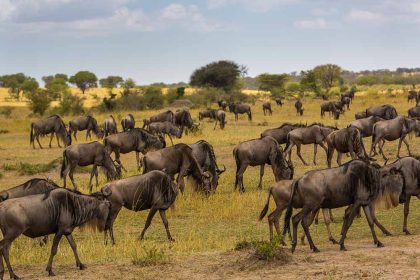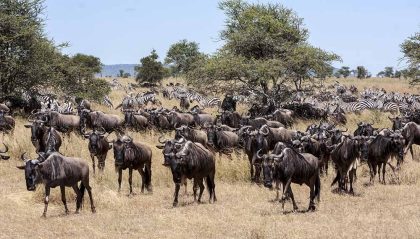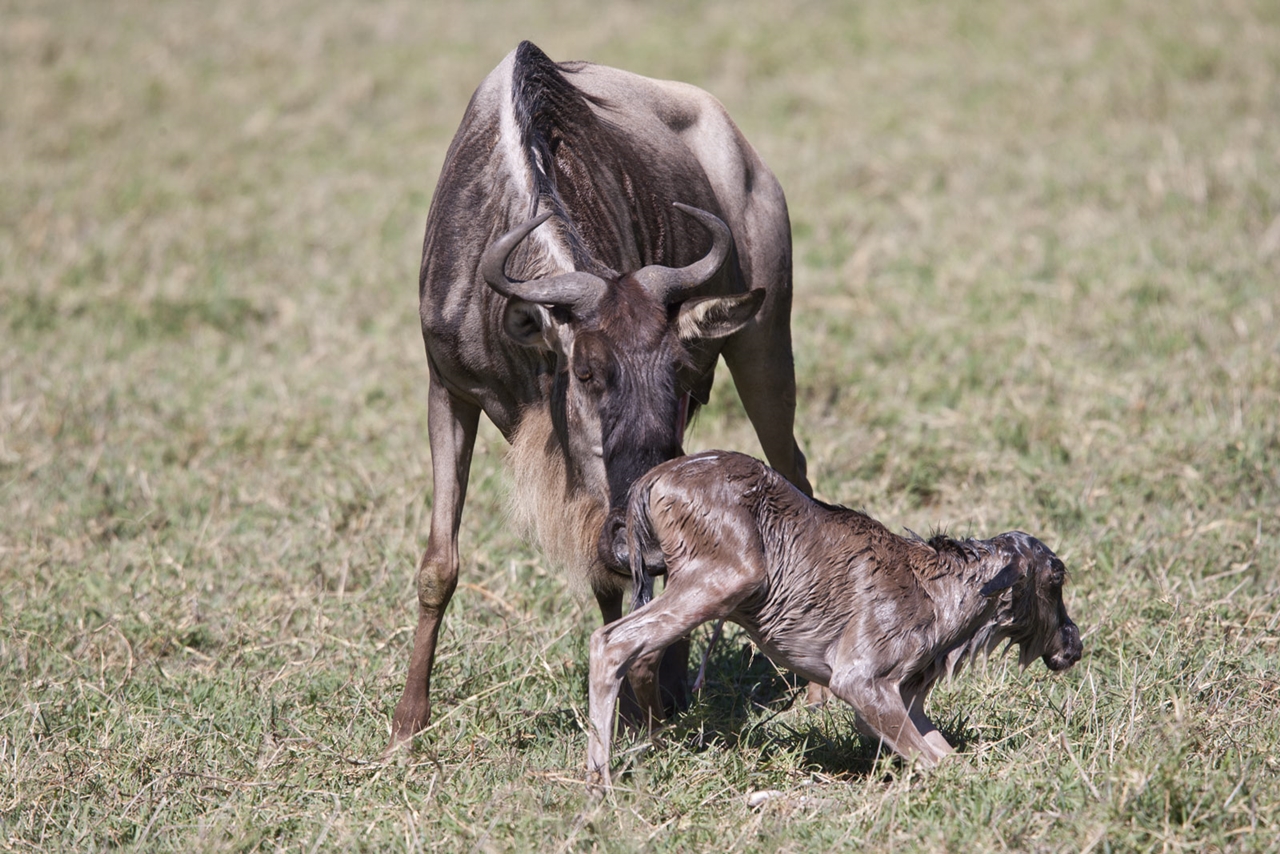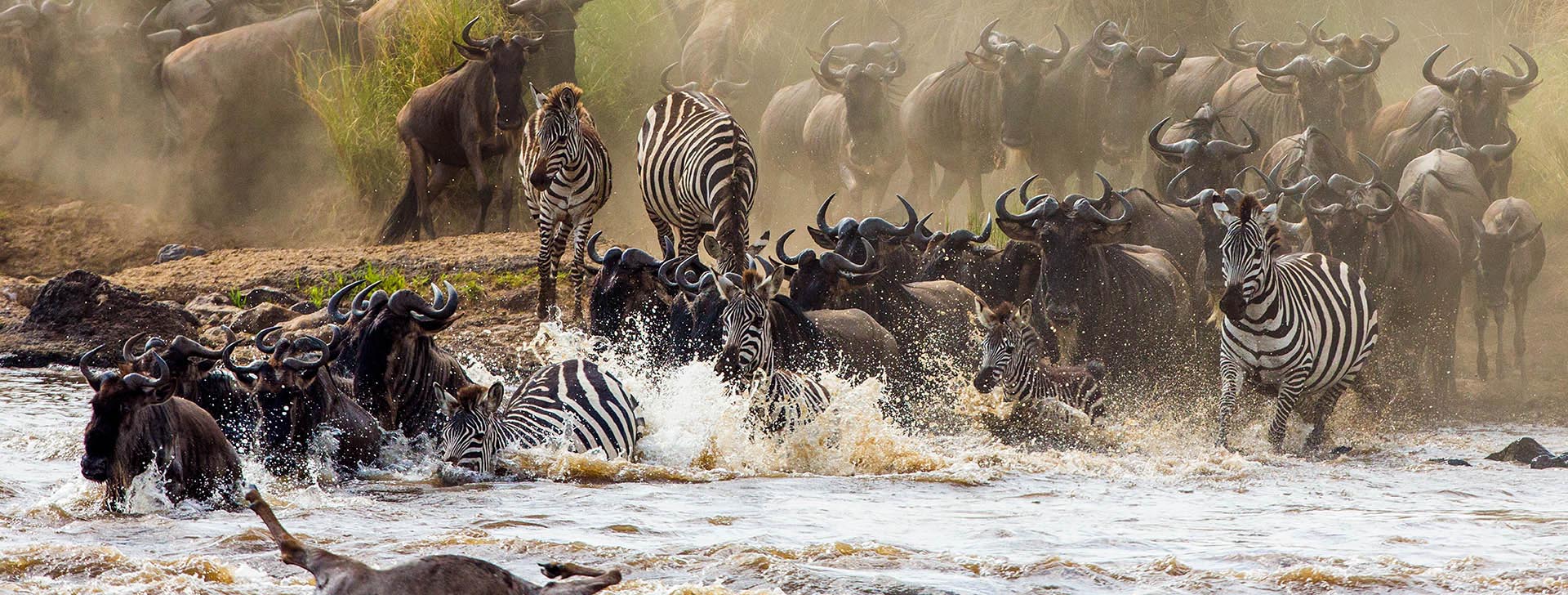How 2 Million Pounds of Rotting Flesh Helps Serengeti
For wildebeest, the yearly migration across the Serengeti can mean life or death.
Predators such as crocodiles and big cats lie in wait as the herd of more than one million makes its 1,000-mile loop across the savannas of Tanzania and Kenya.
But one of the most serious—and overlooked—threats of this overland migration is drowning. With thousands crossing the Mara River at the same time, scores of the antelopes are swept away by the current. (Read how wildebeest know when to migrate.)
So for the first time, scientists have estimated how many wildebeest actually die each year: An average of 6,250, equivalent to the mass of 10 blue whales.
Not only that, Amanda Subalusky, a postdoctoral researcher in aquatic ecology at the Cary Institute of Ecosystem Studies in New York, and colleagues revealed these decaying bodies provide vital nutrients to Serengeti waterways. (Learn more about great animal migrations in National Geographic magazine.)
“When a drowning occurs, we drop everything and start studying them,” says Subalusky, whose study appeared this week in the Proceedings of the National Academy of Sciences.
THE CIRCLE OF LIFE
Figuring out how over two million pounds of rotting wildebeest contributes to the river ecosystem is no easy feat.
For the study, Subalusky and her team hauled drowned animals out of the water to dissect them and figure out their exact nutrient composition.
They also put parts of the wildebeest in the river, protected by special croc-proof decomposition cages, to see how long it took each part—skin, flesh, and bones—to decay in the environment.
Chemical measurements of local water and fish were taken to see how much the nutrients of the wildebeest were incorporated into the environment. The team discovered only a small portion of the bodies are gobbled up by crocodiles—they can only eat.
DEATH’S LEGACY
The drowned wildebeests’ major contribution to the ecosystem is their skeletons. Wildebeest bones take around seven years to decay, slowly releasing phosphorous, an element critical for plant and animal growth. A slimy film of bacteria called a biofilm grows on the bones and provides food for fish in the river.
“There is this legacy of a drowning event through the bones of an animal that could contribute to the ecosystem for decades,” says Subalusky, whose research was funded by the National Geographic Society during her graduate studies at Yale University.
Knowing how the dead wildebeest impact the environment is timely, because it shows what would be lost if wildebeest populations or migrations declined, says Kendra Chritz, a geochemist at the Smithsonian’s National Museum of Natural History who was not involved in the study.
“There are many large-bodied African mammals that no longer migrate, or have had their migrations cut short, because of human population growth and land-use change,” says Chritz. (Read: “Jane Goodall on Why We Should Help the Serengeti.”)
While the wildebeest migration is no longer threatened by a now-defunct plan for a Serengeti highway, migrations of other large mammals around the world like springbok and bison have declined or stopped completely.
UNBALANCED BUDGET
While the new calculations account for where about half of the wildebeest nutrients end up, the budget is not completely balanced. “We can’t account for what happens to about half of the carbon and nitrogen,” Subalusky explains.
Chemical analysis shows that fish in the river are eating up some of these nutrients, but it’s unknown how much.
As a whole, a terrestrial migration having so much impact on an aquatic ecosystem is a somewhat novel concept, and needs to be further explored she says.
“We once saw the wildebeest just as a pulse of carcasses that were available for a short time and then gone,” she says. The new study “changed our sense of scale of the issue.”
The Great wildebeest migration – When is the Best Time to Witness the River Crossings?
This is one of the most common questions that tourists ask their travel agents and tour operators. The thing to understand is that the exact timing of the migration is driven by the weather so an unusually dry or wet season can cause a variation in the timing. That said, the months of May to October are the most likely periods to witness the river crossings.
- May and June — As the rainy season comes to a stop, the south and eastern plains of the Serengeti start to dry out, prompting some of the herds to move towards the Western Corridor and the Grumeti River, which they must cross as they head north towards the Masai Mara plains.
- July to October — By this time, the herds are congregating around the Mara River and crossing in large numbers.
What Makes the Great Migration River Crossing?
In what is one of the most quintessential wildlife experiences on the planet, the annual Great Migration in Tanzania and Kenya is an event unlike any other. Picture millions of wildebeest, zebras, gazelles, elands, and other antelope species making this incredible journey across Tanzania and Kenya every year, giving birth and facing scores of different predators on both land and water. For many tourists, witnessing such a spectacle is an emotional experience that could never be fully captured by mere words or photos. Thus, making this one of the most sought after safari tour. Whether you are on a family safari holiday or going on a solo trip this unique phenomenon shouldn’t be missed!
While every aspect of the Great Migration delivers a unique wildlife viewing experience, the river crossings are not to be missed. The dramatic event is one that showcases nature at its rawest. Life and death hang in the balance in a survival of the fittest among the large herds as they battle hungry crocodiles and hippos, as well as turbulent waters in their search for greener pastures.
Where the River Crossing Takes Place during the Great wildebeest migration
There are two major river crossings along the path of the Great Migration. They are the Grumeti River crossing in Tanzania and the Mara River crossing in Kenya. The Grumeti River is the first water obstacle that these bumbling herds will encounter on this journey. Here, large Nile crocodiles lie in wait as the herds are forced into the water in spite of the obvious threats. This predator activity is beyond anything you can imagine. It is a spectacular event to behold, but it is not as challenging as what they are about to face when crossing the Mara River further north.
The Mara River is almost 400 km long and is deep, wide, craggy and treacherous. It is also home to Africa’s largest crocodile population as well as a robust population of hippos. As the herds clamor and struggle to cross the river to get to the greenery on the other side, these large Nile crocodiles and territorial hippos await, unfolding what is without a doubt one of the most dramatic and chaotic scenes in the animal history of the world. In many ways, this river crossing represents the climax of a long and arduous journey. The rivers are torrential, swollen with water and the two game reserves are teeming with enough animals hungry for the flesh of the migrating beings.


